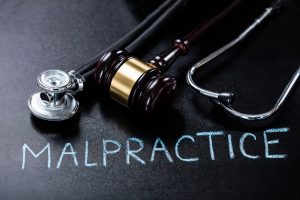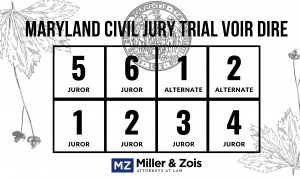Rene Stutzman of the Orlando Sentinel reported this week the post-trial tactic of the defendant’s medical malpractice lawyers after a $28 million verdict in Florida. The tactic: if you lose the trial, put the jurors on trial. Defense attorneys say three of six jurors lied during jury selection and are seeking to bring the jurors back into court to explain themselves. As I explain below, I think this request, if allowed, is a blow to the integrity of the jury system we have. This request would be denied under Maryland law.
The medical malpractice action in the Florida stemmed from a minor surgery performed by Dr. Robert Bowles, an obstetrician-gynecologist, for minor incontinence. Plaintiff alleges that Dr. Bowles negligently performed the procedure and, as a result, she cannot urinate naturally. Instead, the Plaintiff must catheterize herself twice a day for the rest of her life. We are talking about serious damages in this case.
An Offer the Doctor Should Have Taken
Still, the Plaintiff’s attorney told reporters that he had offered to settle for $275,000 before trial. Instead, the doctor and his attorneys rolled the dice, and they got hit with a $28 million verdict. Florida has a cap on pain and suffering damages so she will receive nothing resembling $28 million in even the best-case scenario. (But would you take $28 million for this woman’s injury?)
 The doctor’s attorney now alleges that three jurors lied during voir dire, claiming that two jurors did not disclose that they were involved in lawsuits and a third did not mention all the lawsuits she had been involved with in the past. Most of these lawsuits, however, involved unpaid debts in which she was a defendant.
The doctor’s attorney now alleges that three jurors lied during voir dire, claiming that two jurors did not disclose that they were involved in lawsuits and a third did not mention all the lawsuits she had been involved with in the past. Most of these lawsuits, however, involved unpaid debts in which she was a defendant.
Our Experience with This Nonsense
One of our attorneys tried a case recently where the defense lawyers in post-trial arguments claimed juror misconduct. These lawyers contended that although a voir dire question was asked in the present tense, the juror could not have possibly understood that the question was in the present tense because the question was presumably read quickly. The logic of the argument is that although the juror inadvertently answered the question honestly, she had malice in her heart because she must have understood the question in the present tense. Why? Because she could not possibly have understood the question posed “in an instant during voir dire.” The defense attorneys claimed that while she told the truth, she must have meant to lie.
It flabbergasted me. Can you imagine making this argument with a straight face? Calling this argument ridiculous seems drastically understated. The Anne Arundel County trial judge summarily rejected the argument. Defendant’s attorney noted an appeal but shortly thereafter agreed to pay the entire judgment. Why? The claim was just silly. Continue reading
 The Maryland Daily Record reported yesterday that U.S. District Judge Richard D. Bennett dismissed the complaint filed by prison inmate Byron Smoot against hip-hop mogul Russell Simmons, finding that Simmons and co-defendant Missouri based Kellwood Company lacked the requisite minimum contacts with Maryland that would make them amenable to jurisdiction in Maryland.
The Maryland Daily Record reported yesterday that U.S. District Judge Richard D. Bennett dismissed the complaint filed by prison inmate Byron Smoot against hip-hop mogul Russell Simmons, finding that Simmons and co-defendant Missouri based Kellwood Company lacked the requisite minimum contacts with Maryland that would make them amenable to jurisdiction in Maryland. Maryland Injury Law Center
Maryland Injury Law Center




